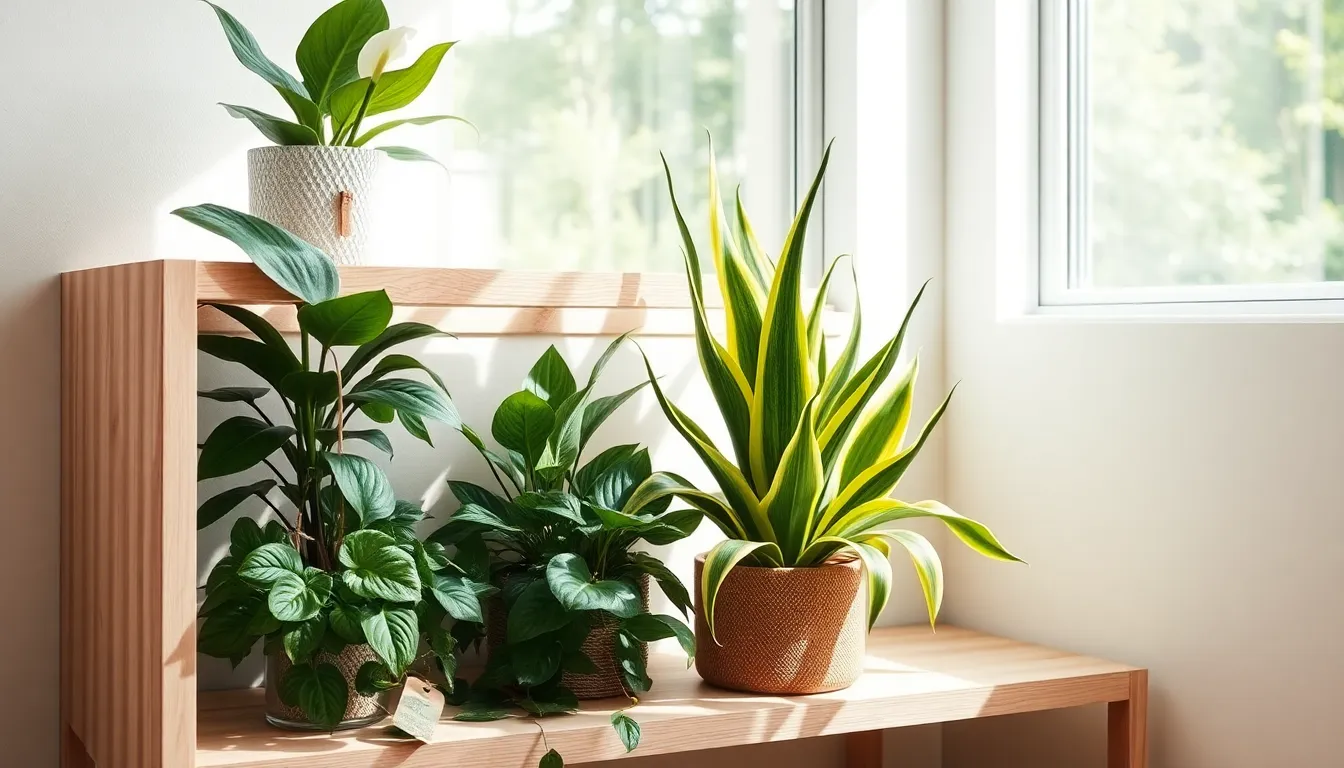Welcome to a world where lush greenery meets wellness, all contained within the comfort of your home. Whether you’re just beginning your gardening journey or have long embraced the green-thumb lifestyle, this guide to the Best Indoor Plants for Air Quality is your gateway to a healthier, more vibrant living space. Imagine the joy of nurturing plants that not only beautify your home but also purify the air you breathe—an achievable endeavor that promises both aesthetic and practical rewards.
In this guide, you’ll discover a curated selection of indoor plants known for their air-cleansing prowess, each one a natural ally in creating a healthier home environment. From the novice gardener eager to transform their space with easy-care options, to the seasoned plant enthusiast looking to expand their collection with purpose, there’s something here for everyone. As you delve into these pages, you’ll gain practical tips and insights, empowering you with the confidence to cultivate an indoor oasis that thrives. So, let’s dig in and embrace the joys of gardening that not only uplift our spirits but also enhance our well-being.
Peace Lily (Spathiphyllum wallisii)
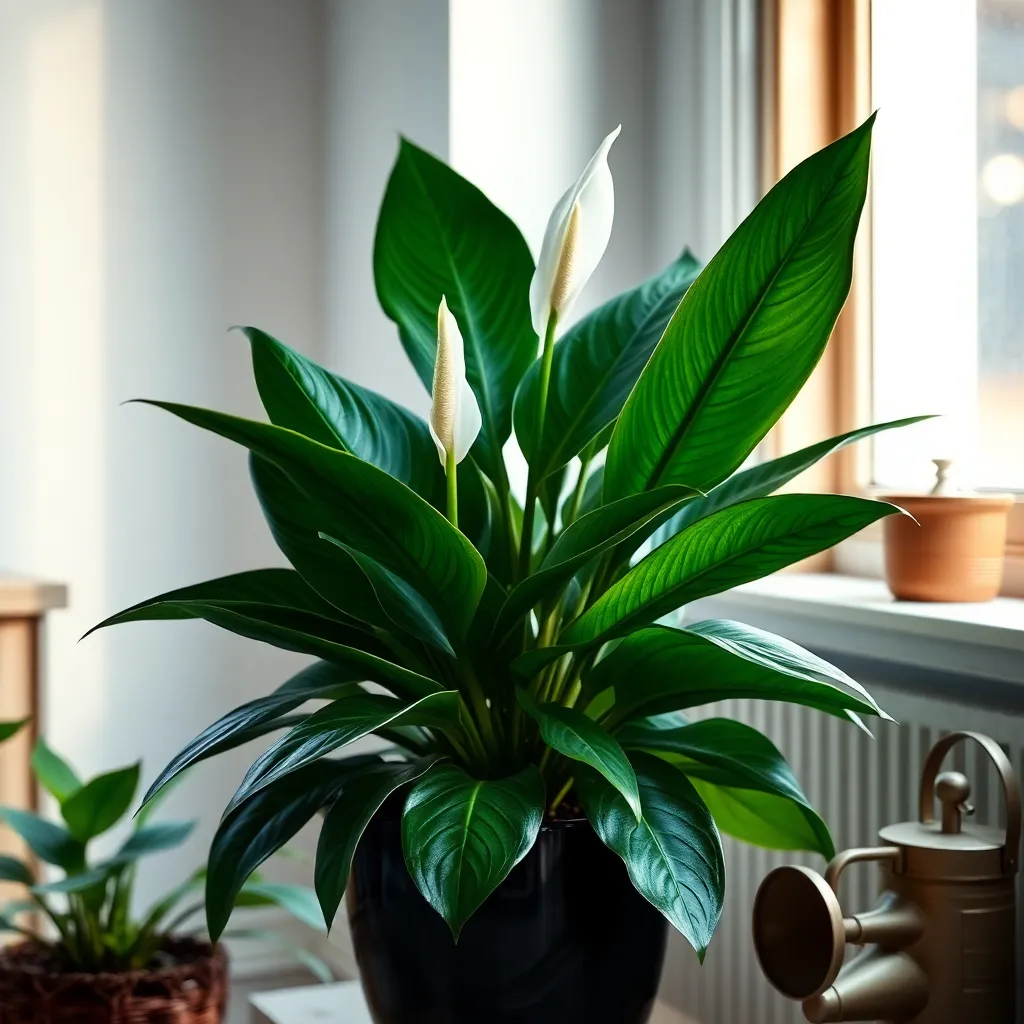
Peace Lilies, or Spathiphyllum wallisii, are well-loved for their ability to purify the air, making them a top choice for indoor environments. They are excellent at removing toxins like ammonia, benzene, and formaldehyde, which can significantly improve your home’s air quality.
For beginners, Peace Lilies are forgiving plants that thrive in low to medium, indirect light, making them perfect for spots that don’t receive direct sunlight. Ensure they are planted in well-draining soil, such as a mix of peat moss, pine bark, and perlite, to avoid root rot.
Watering is key to keeping your Peace Lily healthy, and these plants prefer to be kept moist but not soggy. A good rule of thumb is to water when the top inch of soil feels dry, and always use room temperature water to avoid shocking the plant.
Advanced gardeners can encourage more vigorous flowering by providing a diluted houseplant fertilizer once a month during the growing season. Additionally, wiping the leaves with a damp cloth periodically will keep them dust-free and allow the plant to photosynthesize more efficiently.
Boston Fern (Nephrolepis exaltata)
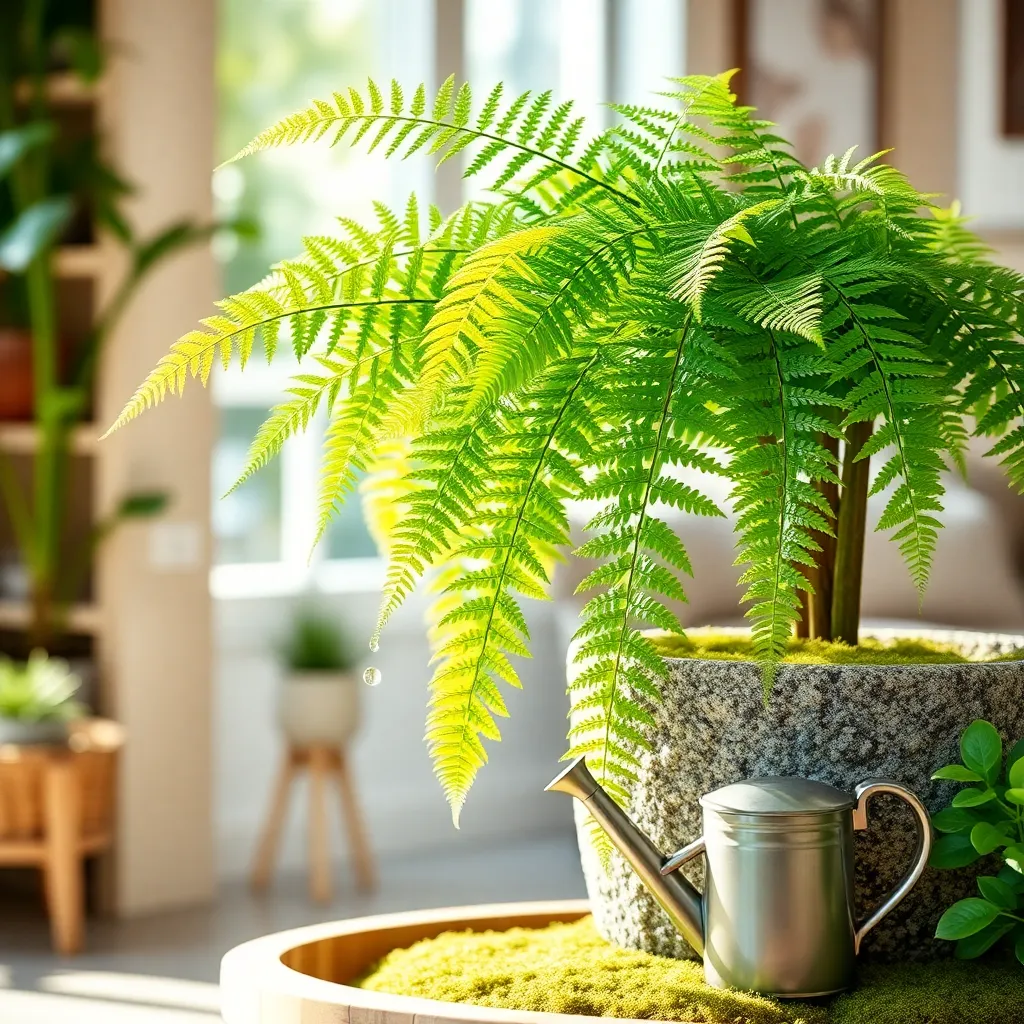
The Boston Fern (Nephrolepis exaltata) is a lush, vibrant plant known for its ability to effectively filter indoor air. Its feathery, arching fronds not only purify the air but also add a touch of elegance to any indoor space.
To thrive, Boston Ferns prefer a humid environment, making them ideal for bathrooms or kitchens, where steam from showers or cooking can provide the necessary moisture. If placing them elsewhere, consider using a pebble tray filled with water beneath the pot to boost humidity levels.
These ferns flourish in indirect light, making them perfect for north- or east-facing windows. Direct sunlight can scorch their delicate leaves, so it’s important to shield them with sheer curtains if they’re near a bright window.
When it comes to watering, Boston Ferns like their soil to be consistently moist but not soggy. Check the top inch of soil and water when it feels dry, ensuring excess water drains away to prevent root rot.
For those looking to elevate their plant care game, consider misting the leaves regularly to mimic the fern’s natural tropical habitat. Additionally, repotting every couple of years in a well-draining potting mix can promote healthy growth and prevent the roots from becoming cramped.
Spider Plant (Chlorophytum comosum)
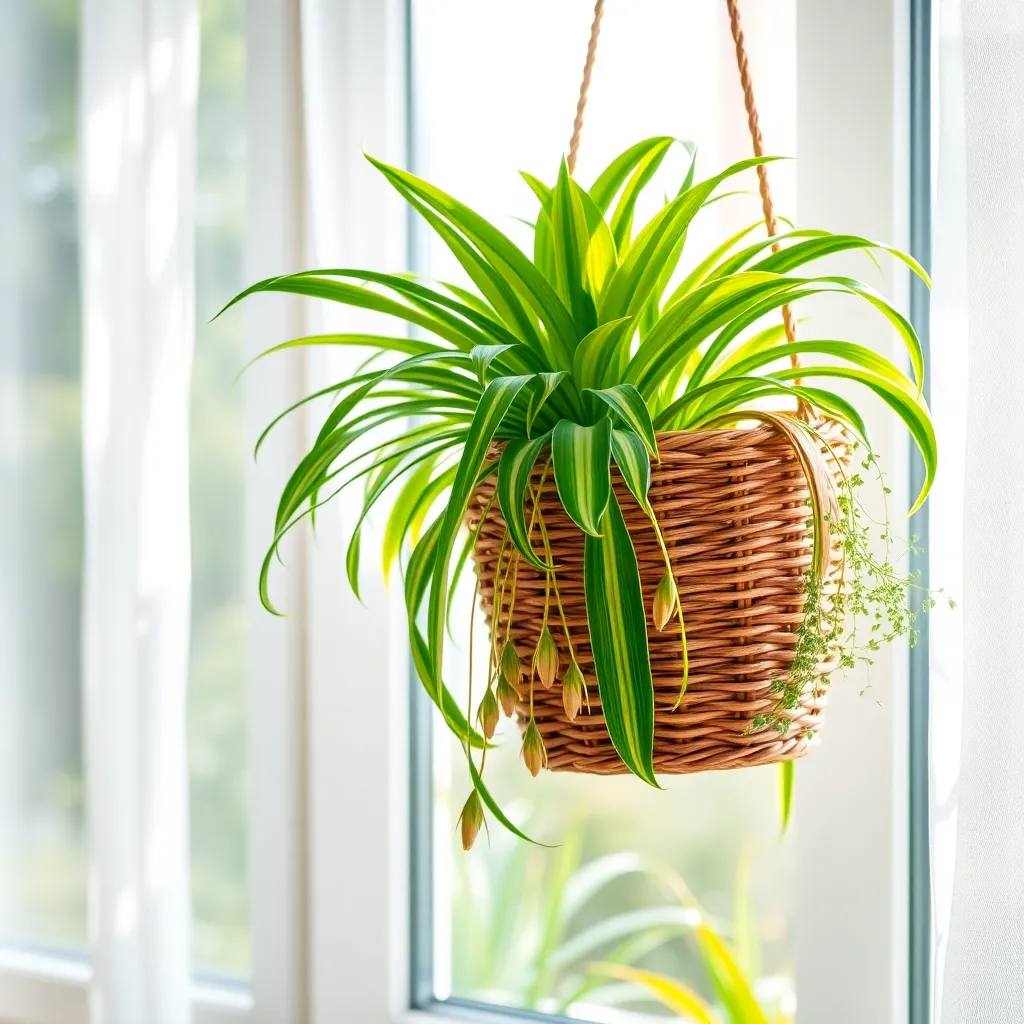
Spider plants, or Chlorophytum comosum, are renowned for their air-purifying abilities and ease of care, making them an ideal choice for improving indoor air quality. These hardy plants thrive in indirect sunlight, so placing them near a window with filtered light is perfect.
Watering your spider plant correctly is crucial for its health; aim to keep the soil slightly moist but avoid overwatering, which can cause root rot. Using a well-draining potting mix, such as one with a blend of peat, pine bark, and vermiculite, will ensure your plant’s roots are healthy and happy.
Spider plants are known for their striking green and white-striped foliage, which adds a vibrant touch to any room. For optimal growth, fertilize your plant every few months with a balanced, water-soluble fertilizer to provide essential nutrients.
While generally low-maintenance, spider plants can occasionally develop brown tips, often due to fluoride in tap water. To prevent this, consider using distilled or rainwater when watering your plant, and trim any discolored leaves with clean, sharp scissors to encourage new growth.
Rubber Plant (Ficus elastica)
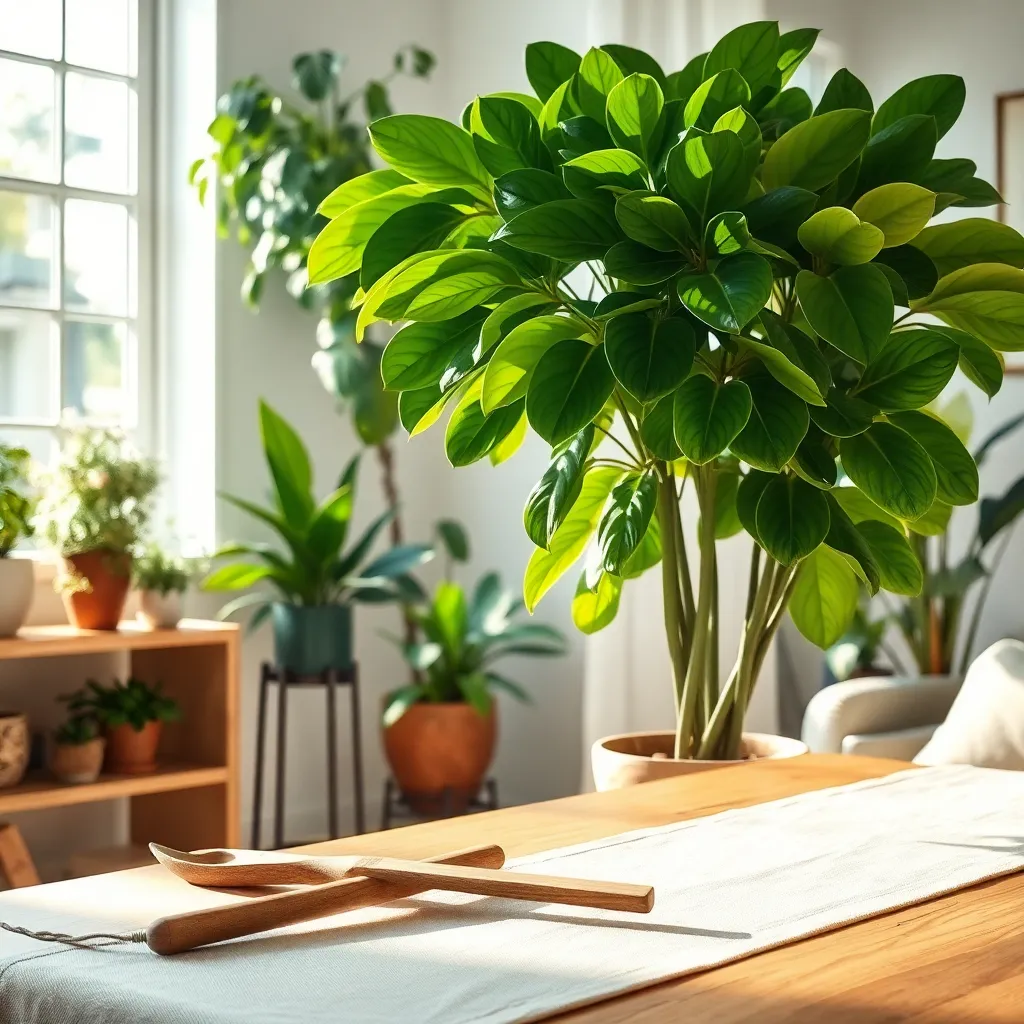
The Rubber Plant (Ficus elastica) is not only a striking ornamental plant but also a powerful air purifier. It is particularly effective at removing toxins such as formaldehyde from indoor spaces, making it an excellent choice for improving air quality.
To thrive, place your Rubber Plant in a location with bright, indirect light. Direct sunlight can scorch its leaves, while too little light may lead to leggy growth, so finding a balance is crucial.
Rubber Plants prefer a well-draining potting mix, ideally a blend of peat, pine bark, and perlite. Ensuring the soil drains well will prevent root rot, a common issue if the plant is overwatered.
Watering should be done when the top inch of soil feels dry to the touch. It’s essential to avoid overwatering, as this can lead to leaf drop and other health issues for your plant.
For those looking to encourage bushier growth, consider pruning your Rubber Plant during its active growing season in spring or summer. Trim just above a node to promote branching and create a fuller appearance.
Bamboo Palm (Chamaedorea seifrizii)
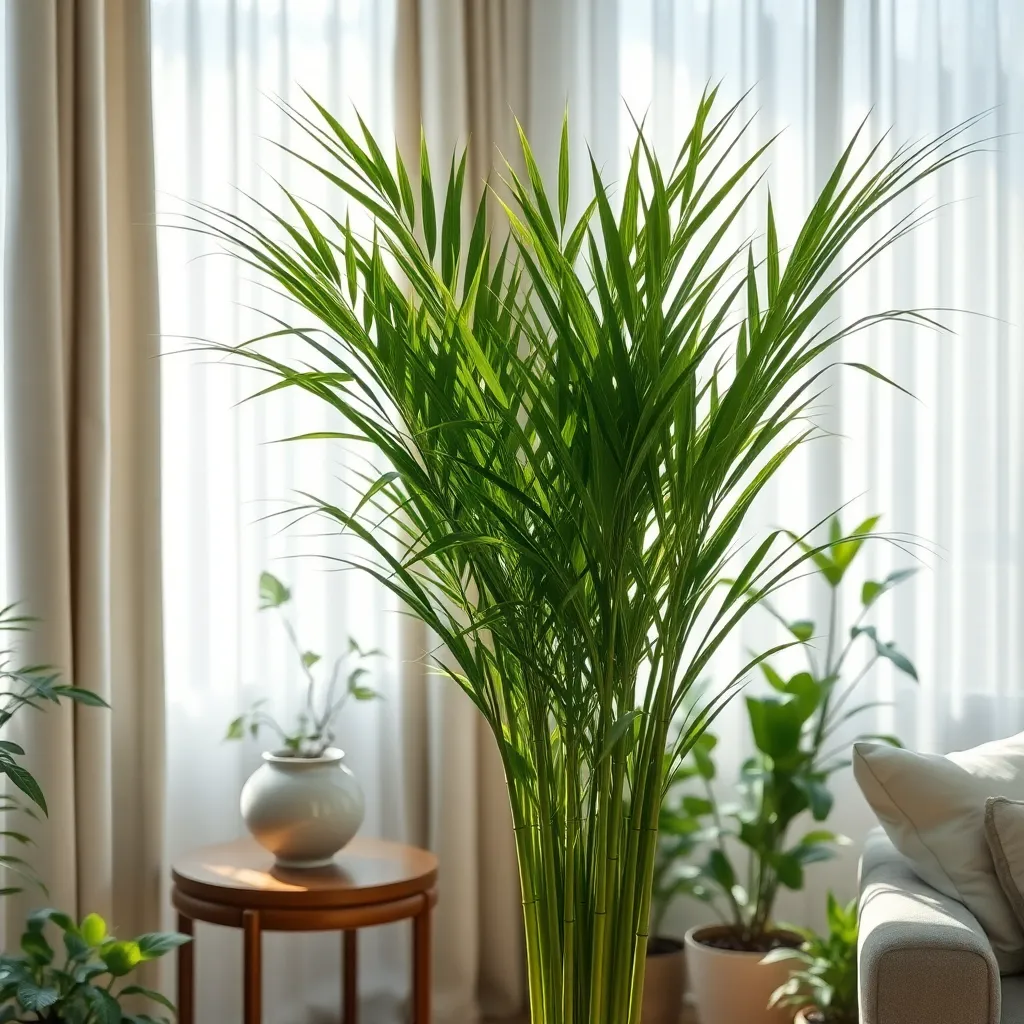
Known for its graceful, feathery fronds, the Bamboo Palm (Chamaedorea seifrizii) is a stunning addition to any indoor space. This plant is not only aesthetically pleasing but also excels at improving air quality by filtering out pollutants like benzene and formaldehyde.
To ensure optimal growth, place your Bamboo Palm in a location with indirect sunlight. Direct sun can scorch its leaves, so a bright but shaded spot is ideal.
Maintain a consistent watering schedule by keeping the soil evenly moist but not waterlogged. A well-draining potting mix, such as a combination of peat and perlite, is recommended to prevent root rot.
For gardeners looking to give their Bamboo Palm a boost, consider misting the leaves regularly to increase humidity, especially in drier indoor environments. Fertilize monthly during the growing season with a balanced, water-soluble fertilizer to support lush, healthy foliage.
Conclusion: Growing Success with These Plants
In cultivating a thriving indoor space, we’ve explored how nurturing relationships with plants can mirror the care and attention needed in human connections. Our journey covered five key concepts: the importance of communication through understanding plant needs, the value of patience in waiting for growth, the balance of space and support each plant (and person) requires, the adaptability in responding to environmental changes, and how mutual benefits arise from healthy interactions.
As a next step, choose one plant from our list and commit to caring for it, observing how this practice can enhance the atmosphere and provide a sense of shared growth. This tangible action serves as a reminder of how nurturing relationships with others can be equally rewarding.
Remember, this article is a resourceful guide on intertwining the art of plant care with relationship building. Bookmark it for future reference, ensuring you have these insights at your fingertips. As you embark on this journey, know that the seeds of effort you plant today will blossom into successful, fulfilling relationships tomorrow. Empower yourself to make these connections flourish by taking the first step now.

